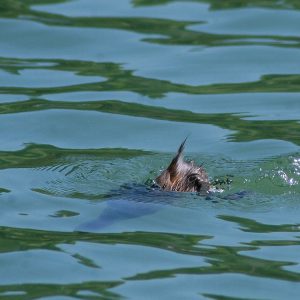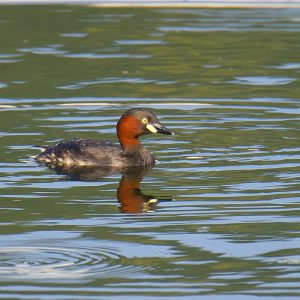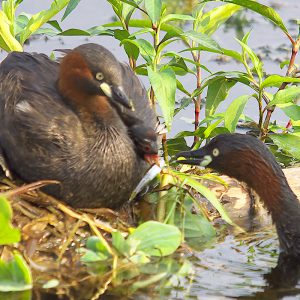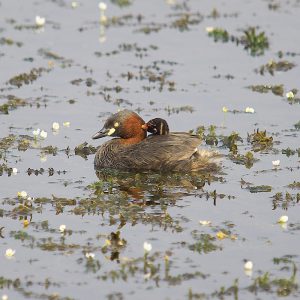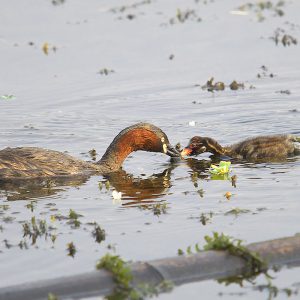むなかたが集まる
電子データベース
電子データベース
カイツブリ
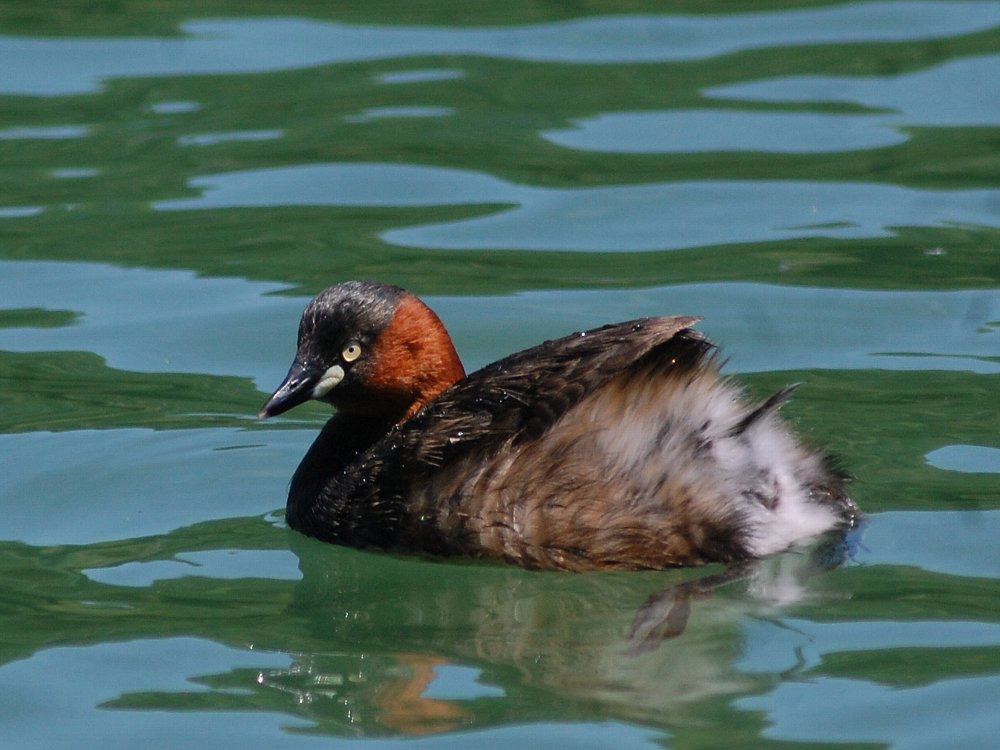
| 種目 | カイツブリ (鳰) | 分類 |
カイツブリ目 カイツブリ科 カイツブリ属 |
学名 | Tachybaprus ruficollius | 英名 | Little Grebe |
|---|---|---|---|---|---|---|---|
|
カイツブリ (鳰) |
カイツブリ目 カイツブリ科 カイツブリ属 |
Tachybaprus ruficollius | Little Grebe |
宗像市でみられる場所・時期
留鳥,一年中見られる。溜め池,ダム湖,河川などでよく見られる。宗像市内でも繁殖している。巣は「鳰の浮巣(におのうきす)」として知られており,水草,杭,ヨシの茎などに作る。
特徴
全長26㎝。日本国内で見ることができるカイツブリ属の中では最小で,雌雄同色である。
夏羽では,顔から頭頂,後頸が黒く,頬から側頭は赤褐色。正面は黒っぽく胸から下尾筒は淡褐色である。尾は短くてほとんどない。嘴は黒く,先端は黄白色。嘴基部には黄白色の部分があり,虹彩も黄白色。
冬羽は夏羽に比べて淡色で,頬などの赤褐色みはなくなり,上面も褐色みが強い。
若い個体は,冬に群れることが多い。
足が後方に付いており,水を掻いたり潜水するのに適した形をしている。
習性
つがいで生活するが,非繁殖期には若い個体が群れで生活する。潜水して小魚やエビなどの甲殻類を食べるほか,トンボなどの昆虫類も捕獲する。
カイツブリ類に共通するが,子育て時期には,雛を背中に乗せて外敵から雛を守る姿を見ることができる。
分布
留鳥として本州中部以南に広く分布している。東北地方以北では夏鳥。
バルト海沿岸,イギリス,地中海沿岸,アフリカ大陸南部(サハラ砂漠以南)アラビア海,インド亜大陸,東南アジア,フィリピン諸島,インドネシア(ジャワ,スラワシ),ニューギニア北部沿岸,インドシナ半島,東シナ海沿岸,黄海などに留鳥として存在し,繁殖期にはその周辺部分にも進出して繁殖している。
その他
カイツブリの巣は,古くから「鳰の浮巣」として知られており,詩歌によく取り上げられている。
松尾芭蕉の「さみだれの鳰の浮巣を見にゆかむ」がよく知られている。琵琶湖の別名「鳰の海」は,琵琶湖にカイツブリが多く住んでいたことから名付けられたと言われている。
 はじめに
はじめに お問い合わせ
お問い合わせ